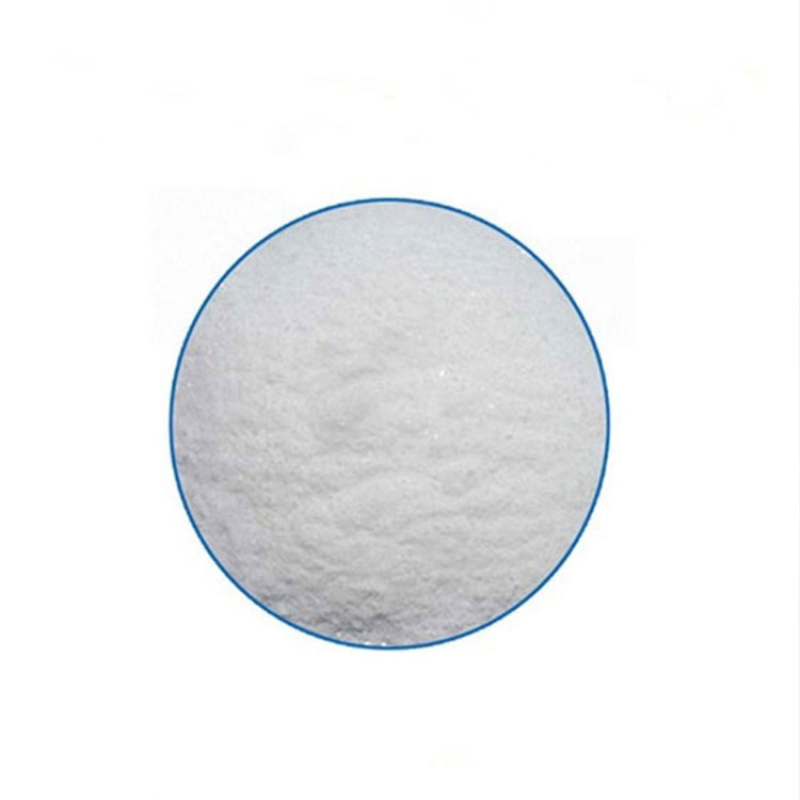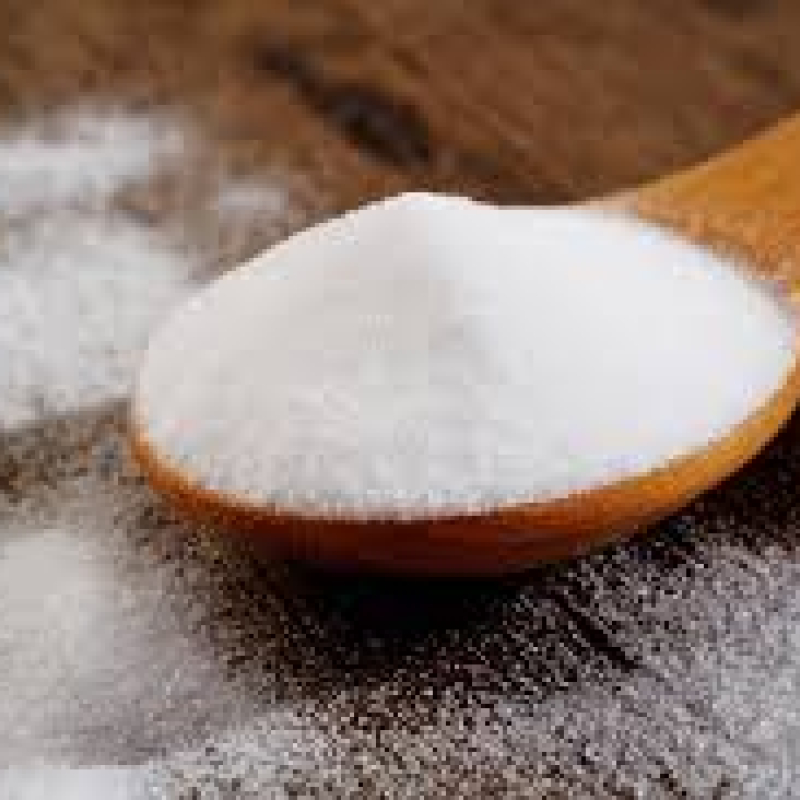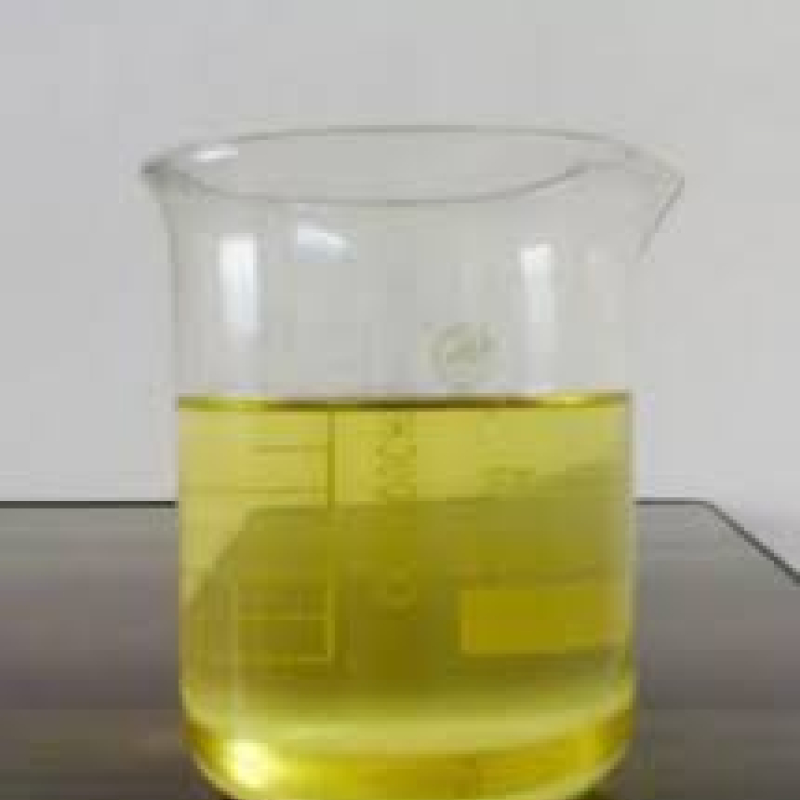Products Description of 1,2,3-1H-Triazole CAS#288-36-8Crystallization.
Contact Now
Products Description of Imidazole CAS#288-32-4Imidazole, with the molecular formula C3H4N2, is an organic compound and a type of diazoles. It is a five-membered aromatic heterocyclic compound containing two meta-nitrogen atoms in the molecular structure.
Contact Now
Products Description of 1H,1H,2H,2H-Perfluorodecyltriethoxysilane CAS#101947-16-4Organosilicon compounds and organosilicon materials made from them are of many varieties and excellent in performance. They have been widely used in industrial and agricultural production, emerging technologies, national defense and military industries, etc. The hydrosilylation reaction is one of the most important methods for generating Si-C bonds in organosilicon chemistry.
Contact Now
Products Description of Imidazole CAS#288-32-4 Imidazole, with the molecular formula C3H4N2, is an organic compound, a type of diazole, and a five-membered aromatic heterocyclic compound containing two meta-nitrogen atoms in the molecular structure. The unshared electron pair of the 1-nitrogen atom in the imidazole ring participates in the cyclic conjugation, and the electron density of the nitrogen atom is reduced, making it easy for the hydrogen on this nitrogen atom to leave in the form of hydrogen ions.Imidazole is acidic and alkaline, and can form salts with strong bases.
Contact Now
1H-Benzotriazole CAS #95-14-71H-Benzotriazole is prepared by the reaction of o-phenylenediamine with nitrous acid in dilute sulfuric acid. Damschrodner and Peterson were able to synthesize the 1H-benzotriazole in a high yield (80%) by nitrosation of o-phenylenediamine with sodium nitrite in glacial acetic acid and water.1H-Benzotriazole is an anticorrosive agent, which is useful in aircraft deicing and antifreeze fluids. It is also employed in dishwasher detergents.
Contact Now
Products Description of ASTRAZON PINK FG CAS#3648-36-0Dark red uniform powder. Dissolves in water to produce bright pink. When dyed at high temperature (120℃), the color does not change. If dyed in sulfuric acid bath, the color changes slightly, and when dyed in formic acid bath, the color does not change. Light fastness level 4.
Contact Now
Products Description of 2,4-Difluoro-alpha-(1H-1,2,4-triazolyl)acetophenone CAS#86404-63-9Pharmaceutical Chemical Intermediates2,4-Difluoro-alpha-(1H-1,2,4-triazolyl)acetophenone Chemical PropertiesMelting point 103-107 °C(lit.)Boiling point 388.0±52.0 °C(Predicted)density 1.39±0.1 g/cm3(Predicted)storage temp. 2-8°Csolubility Chloroform (Slightly), Methanol (Slightly)form Solidpka2.05±0.10(Predicted)color White to pale brownCAS DataBase Reference86404-63-9(CAS DataBase Reference)Safety InformationSafety Statements 24/25WGK Germany 3HS Cod
Contact Now
CELLULOSE ACETATE BUTYRATE CAS#9004-36-8Cellulose acetate butyrate has a wider solubility range.
Contact Now
Products Description of AGAROSE CAS#9012-36-6Agarose is a chain-like neutral polysaccharide composed of D-galactose and 3,6-endo-L-galactose.
Contact Now
Products Description of Phosphorous acidCAS#13598-36-2Colorless crystals. Easily soluble in water and alcohol.Phosphorous acid Chemical PropertiesMelting point 73 °CBoiling point 200 °Cdensity 1.651 g/mL at 25 °C(lit.)vapor pressure 0.001Pa at 20℃Fp 200°Cstorage temp. 0-6°Csolubility DMSO (Slightly), Methanol (Slightly), Water (Sparingly)form CrystalspkapK1 1.29; pK2 6.74(at 25℃)Specific Gravity1.651color WhiteWater Solubility SOLUBLESensitive Air Sensitive & HygroscopicMerck 14,7346Stability:Stable.
Contact Now
Tolyltriazole CAS#29385-43-1Tolyltriazole is a water-stabilizing chemical that inhibits corrosion by bonding to metal parts and machinery surfaces to prevent water from destabilizing the molecular structure of the metal. It creates an electrochemical barrier that is thick enough to deter corrosive chemicals. This barrier is very durable and features favorable oxidative and thermal stability. The long-term protective barrier created by tolyl triazole does not contaminate process fluids or the metal material of piping systems.
Contact Now
Products Description of 1,1,2-Trimethyl-1H-benz[e]indole CAS#41532-84-7It is an extremely important alkaline heterocyclic intermediate for the synthesis of benzindolyl cyanine dyes, and is also a key intermediate for the synthesis of a variety of photovariable dyes.
Contact Now
Products Description of Lead Oxide CAS#1317-36-8Lead oxide is an inorganic substance with the chemical formula PbO. It is a yellow crystalline powder. It is insoluble in water and ethanol, but soluble in nitric acid, acetic acid, and hot alkali solution. It is mainly used as a pigment, metallurgical flux, paint drier, rubber vulcanization accelerator, pesticide, etc.On October 27, 2017, the World Health Organization's International Agency for Research on Cancer published a preliminary list of carcinogens for reference.
Contact Now
Products Description of (1H-indol-3-yl)(2,2,3,3-tetramethylcyclopropyl)methanone CAS#895152-66-6White powder(1H-indol-3-yl)(2,2,3,3-tetramethylcyclopropyl)methanone Chemical PropertiesBoiling point 375.0±15.0 °C(Predicted)density 1.099±0.06 g/cm3(Predicted)storage temp. 2-8°Csolubility DMF: 50 mg/ml; DMF:PBS (pH 7.2); (1:7): 0.13 mg/ml; DMSO: 33 mg/ml; Ethanol: 17 mg/mlform A crystalline solidpka15.50±0.30(Predicted)InChIInChI=1S/C16H19NO/c1-15(2)14(16(15,3)4)13(18)11-9-17-12-8-6-5-7-10(11)12/h5-9,14,17H,1-4H3InChIKeyWYZQBEQQQKCTHM-UHFFFAOYSA-NSMILESC(C1C2=C(NC=1)
Contact Now
Products Description of Lead monoxide CAS#1317-36-8Lead oxide is an inorganic substance with the chemical formula PbO. It is a yellow crystalline powder, insoluble in water, insoluble in ethanol, soluble in nitric acid, acetic acid, and hot alkali. It is mainly used as a pigment, metallurgical flux, and paint drier.
Contact Now
5-Methyl-1H-benzotriazole CAS#136-85-6The pure product is usually white to off-white granules or powder, but the actual product may vary slightly due to factors such as purity.Melting point: 80-86℃.Solubility: Hardly soluble in water, soluble in organic solvents such as alcohol, benzene, toluene, chloroform, and also soluble in dilute alkali solution.
Contact Now
Products Description of Hydroxychloroquine sulfate CAS#747-36-4Hydroxychloroquine sulfate is an antimalarial drug that also has anti-inflammatory, immunomodulatory and anticoagulant effects. Currently, hydroxychloroquine is mainly used in the treatment of rheumatoid arthritis, juvenile chronic arthritis, discoid lupus erythematosus and systemic lupus erythematosus, but the clinical effect is slow, often requiring 2 to 4 months. The pharmacological action of this drug is not very clear.
Contact Now
Products Description of Mogroside V CAS#88901-36-4 Mogroside V is extracted from a plant called Momordica grosvenori. Momordica grosvenori is a vine plant of the Cucurbitaceae family (Mogrosvenori genus). The mature fruit of Momordica grosvenori is extremely sweet and is rich in cucurbitane-type tetracyclic triterpenoid saponins, among which Mogroside V is the main sweet component, with a dry weight content of up to 1.6%.
Contact Now
Products Description of Ethyl butylacetylaminopropionate CAS#52304-36-6Mosquito repellent, also known as ethyl butyl acetylaminopropionate, BAAPE, IR3535, and Imonin, is a plasticizer and a broad-spectrum, highly effective, low-toxic insect repellent.Ethyl butylacetylaminopropionate Chemical PropertiesMelting point <-20°Boiling point bp0.2 108-110°; bp0.5 126-127°density 0.987±0.06 g/cm3(Predicted)refractive index nD20 1.452-1.455Fp 318°F (159°C)storage temp. Sealed in dry,Room Temperaturesolubility Acetonitrile (Slightly), Chloroform (Slightly), Ethy
Contact Now
Products Description of TRIDECETH-4 CAS#69011-36-5Condensation products of isomeric alcohol and ethylene oxideTRIDECETH-4 Chemical PropertiesBoiling point 290℃[at 101 325 Pa]density 0.907[at 20℃]vapor pressure 0.007Pa at 20℃Water Solubility 56mg/L at 20℃LogP4.73 at 25℃EPA Substance Registry SystemPolyethylene glycol mono(branched tridecyl) ether (69011-36-5) Safety InformationRIDADR 3082HazardClass 9PackingGroup IIIProduct Application of TRIDECETH-4 CAS#69011-36-5Isomeric alcohol ether E-1300 products are easily dispersed or soluble in water, a
Contact Now
Products Description of 3-Pyridylacetic Acid Hydrochloride CAS#6419-36-93-Pyridine acetate hydrochloride is a colorless solid with m.p.161~163℃, soluble in water.3-Pyridylacetic Acid Hydrochloride Chemical PropertiesMelting point 161-163 °C(lit.)storage temp. Inert atmosphere,Room Temperaturesolubility DMSO (Sparingly), Methanol (Slightly)form Crystalline Powder, Crystals and/or Chunkscolor White to light yellow or beigeMerck 14,7971BRN 3696630Stability:HygroscopicInChIInChI=1S/C7H7NO2.ClH/c9-7(10)4-6-2-1-3-8-5-6;/h1-3,5H,4H2,(H,9,10);1HInChIKe
Contact Now
Products Description of Propiconazole CAS#60207-90-1he triazole compound propiconazole (Pcz), 1-[[2-(2,4- dichlorophenyl)-4-propyl-1, 3-dioxolan-2-yl]methyl]-1,2,4-triazole, is a kind of triazole fungicide (Fig. 1). It is used extensively in a variety of applications. It is used on grasses grown for seed, mushrooms, corn, wild rice, peanuts, almonds, sorghum, oats, pecans, apricots, peaches, nectarines, plums and prunes.
Contact Now
Triethylmethylammonium chloride Chemical PropertiesMelting point 282-284 °C (lit.)storage temp. Inert atmosphere,Room TemperatureWater Solubility Soluble in waterform Powdercolor White to Almost whiteBRN 3912434CAS DataBase Reference10052-47-8(CAS DataBase Reference)EPA Substance Registry SystemEthanaminium, N,N-diethyl-N-methyl-, chloride (10052-47-8)Safety InformationHazard Codes XiRisk Statements 36/37/38Safety Statements 26-36WGK Germany 3TSCA YesHS Code 29239000Factory and Equipment ShowFast delivery timeInventory 2-3 working day
Contact Now
Products Description of 2-Phosphonobutane-1,2,4-tricarboxylic acid CAS#37971-36-12-Phosphonobutane-1,2,4-tricarboxylic acid (PBTC) is the latest generation of internationally popular phosphonic acid. It is one of the most widely used and best-performing products in the compounding of high-efficiency scale and corrosion inhibitors. This product is particularly suitable for water conditions with high temperature, high hardness, high alkalinity, high pH, and high concentration ratio.
Contact Now













![1,1,2-Trimethyl-1H-benz[e]indole CAS#41532-84-71,1,2-Trimethyl-1H-benz[e]indole CAS#41532-84-7](https://d3rnfhc14zcmdf.cloudfront.net/cdn/ff/vCdZL5hgJePL41mQiSGZKs6PuHZLWAvoY27pKNwf9gM/1718385350/public/styles/chanpinzhutu/public/2024-06/%E4%BA%A7%E5%93%81%E5%9B%BE%20%282%29_0.jpg?itok=0rtELXYW)





















